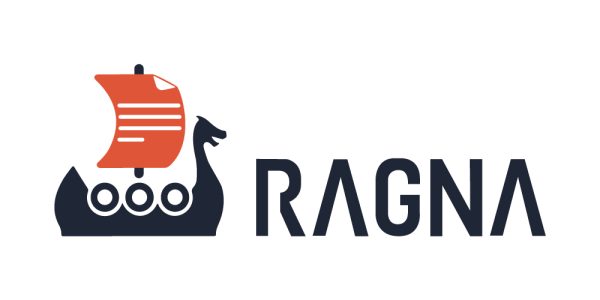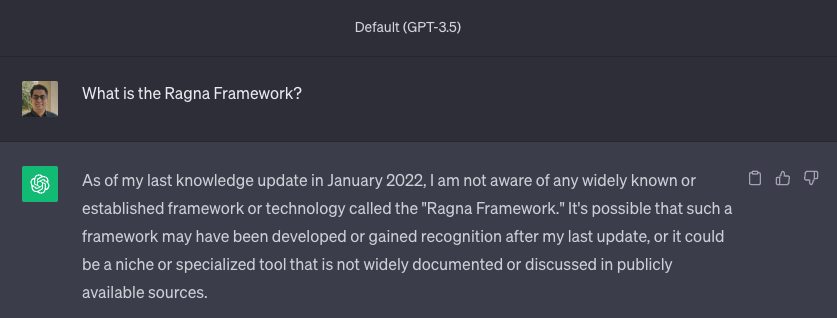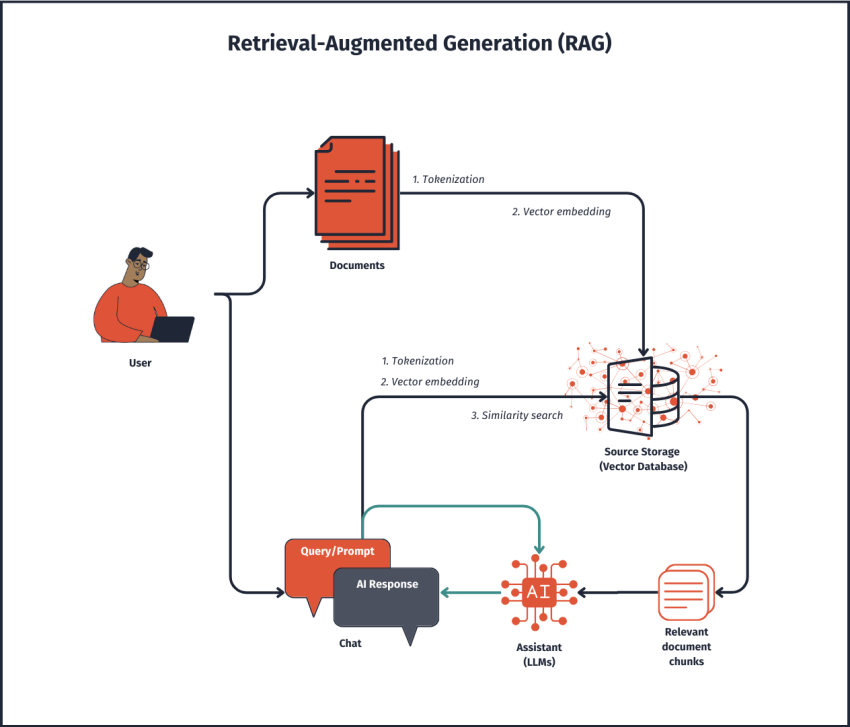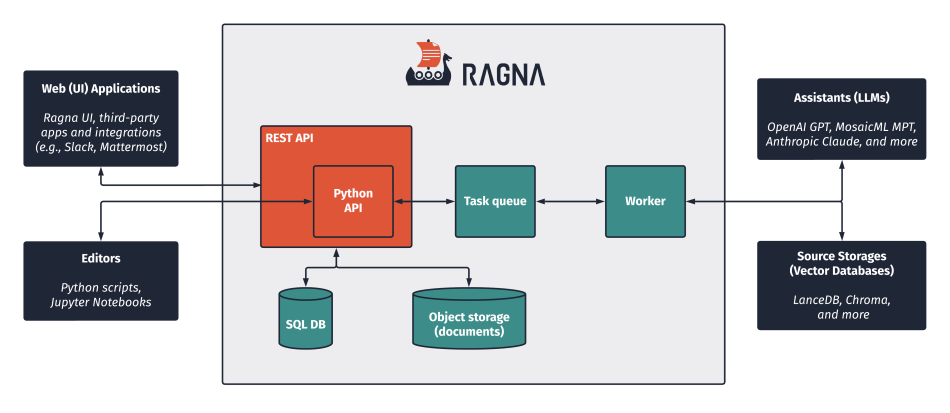

Today, we are announcing the release of Ragna, a new open source project from Quansight designed to allow organizations to explore the power of Retrieval-Augmented Generation (RAG) based AI tools. Ragna provides an intuitive API for quick experimentation and built-in tools for creating production-ready applications allowing you to quickly leverage Large Language Models (LLMs) for your work.
At its core, Ragna is an extensible queue-backed framework that provides:
Ragna currently ships with pre-built extensions for OpenAI, MosaicML, Anthropic, and local LLMs as well as the Chroma and LanceDB vector databases.
In this post, we explain what Retrieval-Augmented Generation is, how it can enable AI assistants to produce more accurate answers to queries, and why yet another tool was needed to make this happen.
Get started at ragna.chat!
Over the last year, Quansight has been helping clients explore the exciting and rapidly evolving world of generative AI, and one idea that has consistently excited people is the prospect of employing an AI assistant to inquire about extensive in-house document collections. The notion of being able to tap into the wealth of knowledge contained within these documents without the arduous task of reading each one is compelling.
However, foundational LLMs are trained on massive but static datasets, and they do not have access to the information contained within your collection of documents. Questions you ask will either be unanswerable or be answered with a hallucination. We need a mechanism to augment the LLMs with the new information from the documents.

ChatGPT has no idea what our new Ragna Framework is.
There are two primary methods for supplying a LLM with fresh data. The first approach involves presenting the data alongside a specific question and directing the LLM to exclusively focus on the provided data. This method falls under the category of prompt engineering. The second technique involves fine-tuning or adjusting the LLM’s parameters through additional training on the new data. Both of these approaches come with their respective challenges. Incorporating data into the prompt is constrained by the limited space available for text in the prompt (approximately 3,000 words for ChatGPT 3.5), making it suitable only for very small datasets. Fine-tuning demands a substantial volume of data, necessitates the use of expensive GPUs, and still carries the risk of producing hallucinations due to the substantial “weight” of the considerably larger original training dataset.
The RAG approach is a combination of a retrieval model and a generative model, and it can be viewed as a tailored variation of prompt engineering. Instead of attempting to include the entire text from a collection of documents in the prompt, it involves conducting a similarity search to pinpoint the segments of text that are most probable to house the answer to the posed question. Subsequently, this smaller subset of text is incorporated into the prompt along with directions to exclusively focus on the provided text.
To understand how this works, let’s define some terminology:
Tokenization – involves breaking down a piece of text, such as a document or query, into individual units called tokens. Tokens are typically words, subwords, or other linguistic units.
Embedding Models – are neural network-based models designed to convert discrete tokens (words or subwords) into dense, continuous vector representations. These vector representations are called embeddings and capture semantic information about the tokens.
Vector Databases – are specialized databases designed to store data in vector format. The primary purpose of a vector database is to enable efficient and fast similarity searches to allow for quick retrieval of documents or text passages that are most similar to a given query or vector.
Similarity Search – is the process of comparing a query vector (representing a question or query) with vectors stored in the vector database to find the most similar documents or passages. Various mathematical measures, such as cosine similarity or Euclidean distance, are used to assess similarity.

The diagram illustrates a series of steps that lead from a query to an answer, as outlined below:
We did not set out to build a new tool; rather, our primary focus was on developing AI capabilities for our clients. However, as we assisted them in navigating the AI landscape, it became evident that a significant gap existed in the ecosystem.
On one side, there are numerous commercial players offering document query tools, but these solutions are both costly and lacking transparency. The inner workings of these tools are hidden, and there is the added problem of vendor lock-in.
On the other side, we encountered enthusiast tools such as LangChain and Llama Index, which have gained immense popularity (our initial investigations began with LangChain). These tools were excellent for initial exploration of a wide array of AI capabilities when using default settings. However, they quickly became inadequate when fine-grained control over components was required. This was typically due to the many layers of abstractions necessary to accommodate “all” AI use cases.
As Quansight accumulated experience in developing RAG applications for diverse clients, certain common needs became apparent:
Ragna was conceived to bridge this gap in the ecosystem, serving as a fully open source framework for constructing RAG-based AI applications that seamlessly scale from research and prototyping to production.

You can install and try out Ragna for yourself in under 10 minutes, and check out the documentation at ragna.chat to learn more.
pip install 'ragna[all]' # Install ragna with all extensions
ragna init # Initialize configuration
ragna ui # Launch the web app
Ragna is an early-stage open source project that has a long way to go. We’d love to hear your thoughts and feedback, and welcome all contributions to help improve Ragna.
If you need someone to help you explore generative AI, build and deploy capabilities across your organization, Quansight can help. See our LLM Services for more information or get in touch with the button below.
Thanks for reading! ⛵